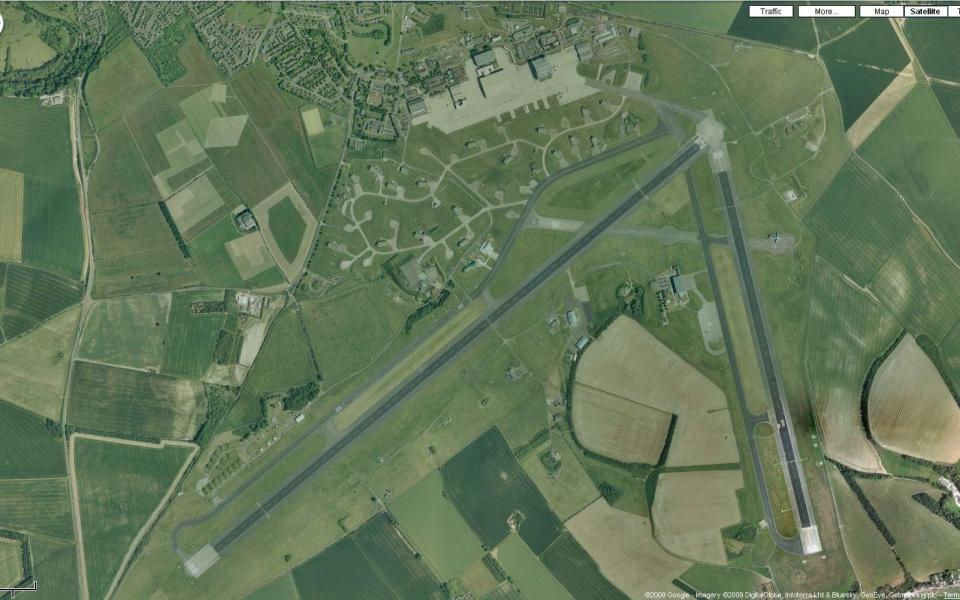A British-made, uncompressible quantum navigation system has been flown and operated in an aircraft for the first time.
This breakthrough comes at a time when the threat from satellite jammers is increasing, preventing traditional GPS from working on both civilian and military aircraft.
Current navigation methods rely on satellites for navigation, making them susceptible to hacking attempts or technological interventions that cripple existing guidance systems.
However, Quantum is a self-contained system that can navigate without the need for any external infrastructure.
Politicians and officials have become acutely aware of the risk posed by GPS blocking following Russia’s invasion of Ukraine and the rise in electronic warfare.
Defense Secretary Grant Shapps recently said the navigation system of an RAF jet was intercepted by a foreign state thought to be Russia.

The world-first flight, on display at Boscombe Down, raises hopes that Britain can achieve its target of keeping British planes safe from GPS interference by 2030 thanks to quantum-powered backup systems.
A Whitehall source told The Telegraph that GPS interference on civilian aircraft was relatively rare but “the world around us continues to present evolving threats”.
“We are ensuring that British aircraft travel safely and without interference by creating state-of-the-art secure navigation systems that effectively eliminate the risk of GPS interference,” they added.
Quantum navigation, unlike GPS, can determine speed and time, and therefore location, by exploiting the properties of ultracold atoms.
Scientists have been trying to translate the theory into workable technologies for several years, but complex systems are delicate and have never been operated outside the laboratory before.
It’s the first time a British project, backed by £8 million of Government funding, has achieved this in a commercial setting.
Science minister Andrew Griffith told The Telegraph during a private test flight of the aircraft that there was a “quantum acceleration” caused by current geopolitical tensions as countries sought to protect themselves from GPS vulnerabilities.
“This is a real world issue,” he said. “At the lowest level, we see car thieves using jammers, but we have also seen the Secretary of State for Defense’s claim that RAF aircraft were intercepted by other State actors.
“There are now many dangers in relying on the GPS system from a single source. What’s really exciting today is getting out of the lab and into the real world environment.
“There is more interest, more capital, more innovation and more clarity coming from the government about the importance of quantum.
“You could argue that to date quantum has been the least understood of the five pillars of the Science and Technology framework, but today quantum is the coming-out party.”
The pioneering system, built by Infleqtion in Oxford, underwent eight hours of testing on a dedicated Avro RJ100 operated by QinetiQ at the MoD base at Boscombe Down, near Salisbury.


Half of the plane’s cabin space was devoted to shelves equipped with the latest technology.
In the latest test flight, The Telegraph saw how two racks around 1.2 meters high contained the lasers, atoms and wires needed for the quantum navigation technology to work.
The device can fit on a single shelf and will soon be made even smaller for future large-scale commercial use, experts said.
QinetiQ, which is also part of the consortium that is installing the DragonFire laser drone defense system on Navy ships, operates the Boscombe Down site and the chief test pilot captained the flight, which carried out a series of aerial maneuvers to improve the new navigation. The system proceeds step by step.
A team of physicists and aeronautical engineers on board took care of the quantum navigation system as well as the onboard quantum clock, which is about the size of a record player.
The first few tests of quantum navigation equipment failed because vibrations from the aircraft’s engines as well as other noise-causing factors prevented the process from working properly.
However, after dismantling the system down to its bare bones and rebuilding it more robustly, the system worked as expected.
Quantum navigation works by using an array of lasers to cool a cloud of rubidium atoms to just slightly above absolute zero (-273°C). A hundred million atoms weighing a billionth of a billionth of a gram have no energy and stop behaving like normal particles. At these cold temperatures, the cloud does not turn into a solid, liquid or gas, but rather another state of matter known as a Bose-Einstein condensate.
This unusual substance behaves as both a wave and a particle because coldness highlights the quantum properties of atoms.
Lasers split the cloud of atoms and each entity travels independently before being reassembled. The way they interact can then be analyzed to reveal speed, distance and location.
The Bose-Einstein condensate is the fifth state of matter, first theorized 100 years ago and first created in the laboratory in the 1990s.
Infleqtion’s inertia portfolio leader, Dr. “You can infer the position of the aircraft based on this interference pattern,” Keshav Thirumalai told The Telegraph from 10,000ft above Wiltshire.
“It’s an amazing achievement to get all of this to this point,” he added.
The next step is to combine the working quantum mechanism with data from the aircraft itself to produce navigable information.
Henry White, chief technologist (sensing) at BAE Systems, part of the consortium making the technology, said: “Now that this demonstration has shown that BEC remains stable in flight, the next step is to implement this as standard equipment during navigation.” It allows us to use .
“Investing at this early stage has helped cement the UK’s position as a leader in quantum technology, achieving a world first with this flight demonstration.”